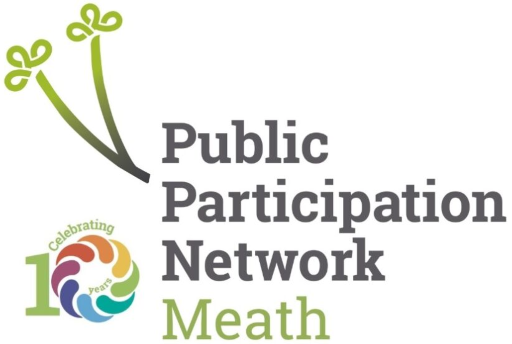All-Ireland Pollinator Plan: May 2025 Newsletter
Comments : 0
 Newsletter: May 2025 The All-Ireland Pollinator Plan is a framework bringing together different sectors across the island of Ireland to create a landscape where pollinators can survive and thrive. Its implementation is coordinated by the National Biodiversity Data Centre. View this email in your browser |
To spot this month: keep an eye out for the Red Mason Bee This is another of our more distinctive solitary bees – look out for rounded abdomen with orange hairs. This species is commonly found in gardens and will nest in existing cavities – usually loose masonry or bee boxes. It’s reckoned that just one of these females can do the pollination work of over a hundred honey bees!  Submit your solitary bee sightings To do this month: If you see your Council doing something positive for pollinators – write and indicate your support This is not something most of us are very comfortable with, but where you see your Council taking positive action for pollinators, it is incredibly helpful if you can write and let them know. It might be reduced spraying, reduced mowing, or pollinator-friendly planting. Often it is the small minority of people who don’t approve of these actions, who get in touch with Councils, and can have a disproportionate voice. For World Bee Day this year, please show your support to your Council (or others) where you see them taking positive actions for pollinators. Photo below shows one of the excellent actions taken by Waterford City and County Council – reduced mowing along the outer ring road in Waterford City, stretching for over 5km.  No Mow May Welcome to #NoMowMay! It’s time to put the lawnmower away and let native wildflowers grow. No Mow May is an annual campaign started by Plantlife in the UK, asking everyone to put away the lawnmower during the month of May to help our native wildlife and feed our hungry pollinators. Native Irish wildflowers like Dandelions, Clover, and Birds-foot-trefoil provide the best source of pollen and nectar for our native pollinators. By mowing less, we can give them a chance to appear naturally – no seeds needed.  Find out how to get involved New resource celebrating native wildflowers The All-Ireland Pollinator Plan is delighted to release a new free resource: Celebrating native wildflowers, developed in collaboration with the National Parks and Wildlife Service, the Department of Agriculture, Food and the Marine, Teagasc, UCD Horticulture and the National Botanic Gardens. Allowing native wildflowers to grow is one of the best ways you can help biodiversity. These precious plants have evolved on our island for many thousands of years and are perfectly adapted to support other native species, especially pollinators. In recent years, wildflower seed mixes have become popular, but they can damage biodiversity. Real native wildflowers don’t need to come from a packet. Their seeds are in the soil beneath our feet, waiting for a chance to emerge. All you need to do is select an existing patch of grass, and mow less. The new booklet explains how to encourage native wildflowers by reducing mowing and includes a poster of the species that might appear such as Bee Orchids, Birds-foot-trefoil, and Oxeye Daisy.  Find out more and download the resource Festival of Farmland Biodiversity This month, the National Biodiversity Data Centre is hosting a month-long online Festival of Farmland Biodiversity. This year’s Festival will celebrate the native species-rich hedgerows that form networks of food and shelter across the Irish countryside. Native hedgerows are an integral part of Ireland’s landscape. They hold immense value for farmers and biodiversity, providing food (such as blossom and berries), creating crucial ecological corridors, help with shade and shelter for livestock, field drainage and a habitat for beneficial insects. There are lots of ways to get involved in the Festival of Farmland Biodiversity. Learn about hedgerows on a farm walk or enter the hedgerow photo competition. As a farmer or grower share your #farmlandbiodiversity actions (pics and reels) on social media  Find out more New resource: Protecting pockets of nature This month, we are delighted to release a short new resource. Protecting Pockets of Nature is a new booklet developed in collaboration with South Dublin County Council. It provides guidance on identifying and protecting areas for nature in local communities. In 2019, the Irish and UK governments declared a Biodiversity Emergency. It’s more important than ever that we protect existing natural areas of all sizes. These might be small strips of grass in housing estates, wild corners, or an ivy-covered stone wall. No matter how small, they are important pitstops for biodiversity in an otherwise sterile landscape. By identifying these areas and taking evidence-based actions to protect and enhance them, we can help create an interconnected landscape to better support our struggling biodiversity. In the context of the All-Ireland Pollinator Plan, this expands on our first and most important action – protect what you have! The new booklet provides clear steps for protecting pockets of nature, from identifying areas of biodiversity value, to engaging with the community and joining the dots with other areas to create ecological corridors. A signage template is also available.  Find out more and download the booklet World Bee Day 20th May World Bee Day is coming up (20th May), and this year we are celebrating buzzing communities. Although pollinator numbers are generally in decline across the island of Ireland, records from the National Biodiversity Data Centre show that local pollinator populations are increasing where actions are being taken to help them. Along with other sectors such as councils and businesses, this is largely thanks to the support and hard work of community groups who are transforming their landscapes for biodiversity. Manicured green spaces are now mini meadows. Close-cropped hedgerows now burst with spring blossom. Rare pollinators are coming back from the brink, and pesticide-drenched borders are now sunny celebrations of Dandelions. Schemes like the Tidy Towns Local Authority Pollinator Award, and the Green Flag awards run by An Taisce and Keep Northern Ireland Beautiful, encourage and reward communities who are undertaking this important work. We still have a long way to go before our landscape is truly pollinator-friendly, but we would like to take this opportunity to say a huge ‘thank you’ to community groups for supporting the Pollinator Plan and protecting these important insects. Your hard work is making a big difference to biodiversity in your area and beyond. If you live in a pollinator-friendly community, help spread the buzz on social media this #WorldBeeDay by sharing pictures and stories of your #BuzzingCommunities on 20th May. To find out more about community actions for pollinators, including case studies and specific resources, visit the community pages. Photo: Buncrana Tidy Towns, Co Donegal.  AIPP Community pages Threats to our native Bluebell Our native bluebell, Hyacinthoides non-scripta, is an early flowering pollinator-friendly plant that naturally occurs in Ireland. The Irish name Coinnle Corra, means tapered candles. Common bluebells can form beautiful blue carpets of colour from April to May and on warm days, they produce a delicate sweet smell. Read this blog from the farmland officer, Ruth Wilson, to learn about how this beautiful native flower is in trouble. Photo: Ruth Wilson  Bluebell blog Mark World Bee Day by carrying out a Flower-Insect Timed Counts (FIT Counts) FIT Counts are an important way that you can help us monitor pollinators. Download the free FIT Count App, watch a 50x50cm patch of flowers for 10 minutes and count how many insects visit. You can carry out a FIT Count anywhere, and on any flower, but where you can, please use one of our 15 target flowers. In May, its especially useful to carry out FIT Counts on Buttercup. You do need to wait until it’s sunny and at least 13 ⁰C though! In 2024, 784 validated FIT Counts were submitted by 135 different volunteers. The average number of insects per FIT Count was 7. Why not try one where you are to see how your site compares.  Learn more about FIT Counts Submit your ideas for the next All-Ireland Pollinator Plan 2026-2030 The next version of the AIPP will be developed across 2025. We want the next Plan to be the most ambitious yet. Please submit your ideas/suggestions – however big, small or radical! Submit ideas at any time and as often as you like.  Submit your ideas The National Biodiversity Data Centre is a Company Limited by Guarantee. Register Number: 730718. National Biodiversity Data Centre, SETU West Campus, Carriganore, Waterford, Ireland, X91PE03 |

